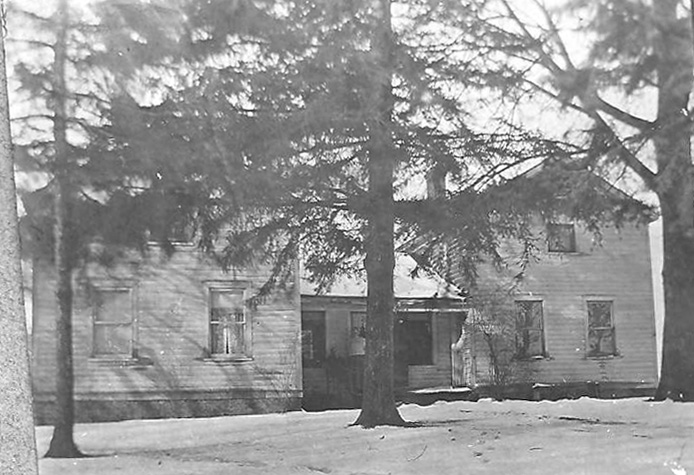Notes
Ben and Mary's home was Cherry Hill Farm, (now) 3028 and 3019 Beebe Road, Wilson, Niagara, NY USA.
William Armour Wilson, Ben's father, started with the intention of giving each of his sons from his second marriage to Mary Barbara Sinsel the use of his farm on Slash (now Maple) Road in Wilson, Niagara, NY, USA, for five years. They could keep whatever they made off the farm. (According to descendants of William's first marriage to Ruth Lamira Tappen, he also gave the sons of this marriage the use of the farm, although the terms might have been slightly different.)
Although things did not work out exactly as William had intended (with either family), Ben, his oldest son from his second marriage, moved onto the farm in 1886, when he was twenty years old. Ben and Mary were married in 1888. In 1892, the year he left his father's farm, Ben purchased 50 acres of land, more or less, from the Farley family, and moved his family, then consisting of Mary and their daughter, Florence May Wilson, to his new farm. In 1904, Ben purchased another 50 acres, more or less, immediately to the south of his existing farm, giving him a farm of roughly 100 acres.
Fern Eleanor (Cook) Lynn, Ben's grand-daughter who grew up in the house and lived there her entire life, said that the family tradition was that her grandfather "moved two houses together." Although it is presently not known for certain whether Ben moved a second house next to an existing house, or whether he moved two different houses to the property, it appears most likely that there was a house on the first property he purchased. First, the land he purchased had been a family farm, and it was unlikely that there was not a house for the family. Second, upon leaving his father's farm, Ben immediately moved his own young family to the land he purchased, strongly suggesting that there was a structure on the land to serve as shelter. (It is, of course, possible that Ben moved a house to the property before he left his father's farm.) Among Ben's negatives of photographs he took is an envelope marked both "Grandpa's casket" and "Korff moving house." The negatives in this envelope show that "Grandpa" was actually Ben's children's grandfather, William Armour Wilson. (Ben's own grandfather, Alexander Wilson Jr, died in 1848, when Ben was 11 or 12 years old, and long before the type of negative of the photograph of the casket was available.) William died 7 Dec 1899. It thus appears likely that Ben moved a second house to his farm in or about 1899.

Ben and Mary's home after the two houses were connected and before renovation.
In any event, Ben joined the two houses together down the middle. The "new" house thus created remained in that configuration for some period of time, as is shown in numerous photographs over the years. Later Ben did extensive renovations to the southern house, which the log support beams in the basement, among other things, reveal to be the older structure. These renovations included putting in a full second floor on the southern side of the house, bumping out the south wall to make a bay extending up both floors, adding an attic over the entire house, adding a back porch with poured concrete roof supports, and adding a large front porch made from field stones which Ben dynamited to reveal their crystaline structure. Ben and Mary's grand-daughter, Fern, told of peeking around the house to watch the rock pile explode even though her grandfather had told all of the children to stay on the other side of the house so that they would not be in danger from flying rocks.
Insert after house picture.
About 1920, Ben had the house wired for electricity by Wilbur Trumble, a grandson of Sarah (Ortt) Kline, the sister of Rachel (Ortt) Smoyer, Mary's mother. Ben's first electrical system consisted of a generator, powered by burning wood, and a wet cell storage system. It was 32 volts, direct current. Electricity generated and stored during the day was used at night for lighting. He also added indoor plumbing at some, presently unknown, time. Fern does not remember a time when they did not have indoor plumbing. While Ben and Mary were on this trip, Wilbur wired their barn for electricity.

